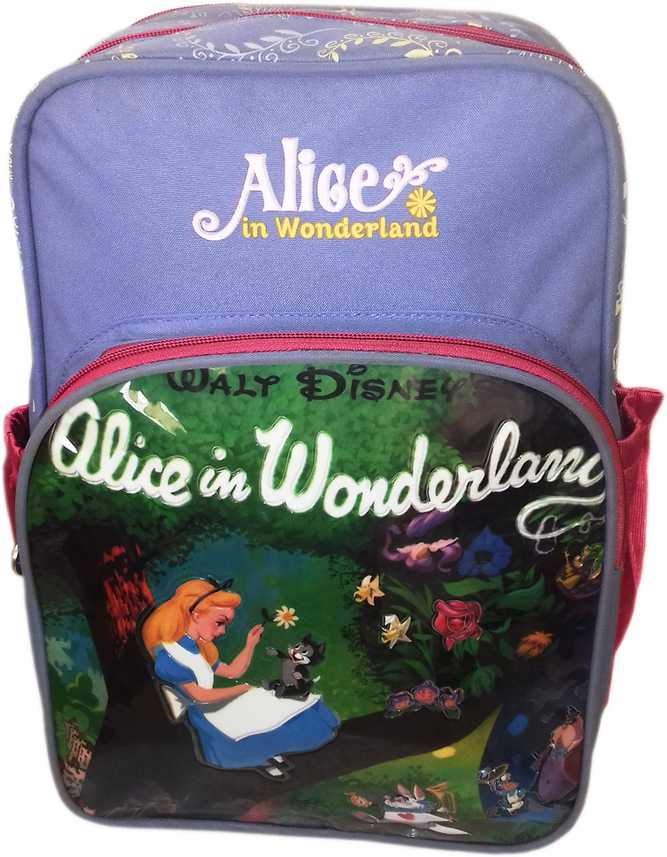Solution: The user clicks the object and Faery moves towards it to make it disappear. See the attached video created using Alice 2.3 for this program. This video is exported from Alice 2.3 from the actual source code of this program. Contact me @ allassignmenthelp@gmail.com for the comprehensive step-by-step guide on how to create this game in.
(South Korean TV series) Alice ( Korean: 앨리스; RR: Aelliseu) is a South Korean science-fiction television series starring Kim Hee-sun and Joo Won. It aired on SBS from August 28 to October 24, 2020, every Friday and Saturday at 22:00 ( KST ). It is described as 'a human sci-fi drama about a magical time travel of a woman who. Schedule your ALICE Instructor certification training online today. Only ALICE Instructors are qualified to deliver the classroom portion of ALICE active shooter response training, teaching others how to respond to active shooter and violent intruder situations. Learn more about ALICE Instructor training opportunities today. Alice 2.4 Tutorial Part 1 of 3 - How to move a car using the asdw keys.
The Alice 2.2 programming environment includes the heBuilder and sheBuilder objects that allow programmers to custom build characters. The other advantage of these objects is that they include a number of predefined animations, including a walking animation, together with several other animations. Now I’m a programmer, not an animator, so I welcome any pre-existing animations, and in my opinion the animations that come with these builder objects are pretty good.
The heBuilder and sheBuilder classes can be found in the gallery: look under Home > Local Gallery > People. The builder classes then enable you to build custom characters, by selecting various features. The interface is fairly straightforward, and is like the character builder for the Wii (not as many options though).
Once you have created a custom character, you can then make use of the pre-defined methods. Methods include a walking animation, together with several “emotion” animations, such as angry, confused, happy etc.
The following video tutorial demonstrates how these methods can be used. To do this we use several “when key is pressed” events to control the character. To get the character to walk forward we combine the walking animation with the move forward method.
Walking while key is pressed
Programming the character to walk when the key is pressed is fairly straightforward and is described in the video shown above. However programming the character to walk while the key is pressed is not so easy. If we try to call the same walk forward method that we use for the “when key is pressed event” the program generates an exception. This is because the while key is pressed event stops executing the code that it executes while the key is pressed as soon as the key is released. This is problematic for the walk method – terminating the method mid-way through leads to this execution. What we need is some way to finish executing the code in the walk method.
To do this we introduce a simple two-state finite state machine. The states for this FSM are walking and idle. Whenever the FSM is in the walking state, we run the walking animation. Whenever the FSM is in the idle state the walking animation is not run. To represent the state we use a boolean valued variable, called walking. The variable is true when the FSM is in the walking state and false otherwise. If there were more than two states we would need to represent the state in another way – perhaps using a string.
Putting this all together, we use the “While key is pressed event”. At the beginning of event we change the walking state to true. This triggers the walking animation action. During the key press event the character moves forward. At the end of the key press event the walking state is changed to false. At this point the walking animation action is stopped, but not until the code for the current call is completed, thus avoiding the termination of code mid-way through.
Ok, that is probably all a bit convoluted, so lets go to the video.
| Developer(s) | Carnegie Mellon University |
|---|---|
| Initial release | 1998 |
| Stable release | 3.4 / March 12, 2018; 3 years ago |
| Written in | Java |
| Platform | Java platform |
| Type | Educational |
| License | Some parts released under an open-source license, source code is available[1] |
| Website | www.alice.org |
Alice is an object-basededucational programming language with an integrated development environment (IDE). Alice uses a drag and drop environment to create computer animations using 3D models. The software was developed first at University of Virginia in 1994, then Carnegie Mellon (from 1997), by a research group led by Randy Pausch.
Origin of name[edit]
According to Randy Pausch, the name “Alice” comes from author Lewis Carroll, who wrote Alice’s Adventures in Wonderland.

'Carroll was a mathematician, novelist, and photographer. Most important, he could do intellectually difficult things but also realized the most powerful thing was to be able to communicate clearly and in an entertaining way. This inspires our efforts to make something as complex as computer programming easy and fun.'
Purpose[edit]
Alice was developed to address four core problems in educational programming:[2]
- Alice is designed solely to teach programming theory without the complex semantics of production languages such as C++. Users can place objects from Alice's gallery into the virtual world that they have imagined, and then they can program by dragging and dropping tiles that represent logical structures. Additionally, the user can manipulate Alice's camera and lighting to make further enhancements. Alice can be used for 3D user interfaces.
- Alice is conjoined with its IDE. There is no syntax to remember. However, it supports the full object-based programming, event driven model of programming.
- Alice is designed to appeal to specific subpopulations not normally exposed to computer programming, such as students of middle school age, by encouraging storytelling. Alice is also used at many colleges and universities in Introduction to Programming courses.
- Alice can be used with Netbeans to convert the Alice file into Java.[3]


Alice 3 is released under an open-source license allowing redistribution of the source code, with or without modification.[4]
Research[edit]
In controlled studies at Ithaca College and Saint Joseph's University looking at students with no prior programming experience taking their first computer science course, the average grade rose from C to B, and retention rose from 47% to 88%, exceeding even the 75% retention rate of students with prior programming experience.[5]
Alice 2.5 Simulator
In a second study at Carnegie Mellon University, students taking their first computer science course with a mediated transfer approach that transitioned from Alice 3 to Java scored an average of 84.96% and 81.52% in two semesters of testing this approach, compared to an average of 60.8% before the mediated transfer approach.[6]
Variant[edit]
Hannstar j mv 4 94v 0 bios reset. A variant of Alice 2.0 called Storytelling Alice[7] was created by Caitlin Kelleher for her PhD dissertation.[8] It includes three main differences:
- High-level animations that enable users to program social interactions between characters.
- A story-based tutorial that introduces users to programming through building a story.
- A gallery of 3D characters and scenery with custom animations designed to spark story ideas.
In a study performed on middle-school girls in the United States, Storytelling Alice appeared to increase interest compared to generic Alice, with a 42% increase in programming time, with students three times as likely to do additional work on their projects, with no reduction in basic programming concepts learned.[9]
Storytelling Alice was succeeded by the interactive storytelling application Looking Glass, developed at Washington University in St. Louis.[10] Tom clancy the division keygen torrent.
See also[edit]
References[edit]
- ^Alice 3's license
- ^'What is Alice?'. Archived from the original on 2017-05-20. Retrieved 2021-04-21.
- ^Daly, Tebring (2015). Learning Java through Alice 3: 3rd Edition. CreateSpace Independent Publishing Platform; 3 edition. ISBN978-1514278901.
- ^'Alice 3 End User License Agreement'. alice3.pbworks.com. Retrieved 31 January 2015.
- ^B. Moskal, D. Lurie, and S. Cooper, Evaluating the Effectiveness of a New Instructional Approach.
- ^W. Dann, D. Cosgrove, D. Slater, and D. Culyba, Mediated Transfer: Alice 3 to Java.
- ^Storytelling Alice
- ^Motivating Programming: using storytelling to make computer programming attractive to middle school girls
- ^'Storytelling alice motivates middle school girls to learn computer programming'. Proceedings of the SIGCHI Conference on Human Factors in Computing Systems: 1455–1464. 2007.
- ^Looking Glass

Further reading[edit]
- Learning to Program with Alice, Wanda P. Dann, Stephen Cooper, Randy Pausch; ISBN0-13-187289-3
- An Introduction to Programming Using Alice, Charles W. Herbert; ISBN1-4188-3625-7
- Alice 2.0: Introductory Concepts and Techniques; Gary B. Shelly, Thomas J. Cashman, Charles W. Herbert; ISBN1-4188-5934-6
- Starting Out with Alice: A Visual Introduction to Programming; Tony Gaddis; Pearson Addison Wesley, 2007; ISBN978-0-321-47515-2
- Virtual World Design and Creation for Teens; Charles R. Hardnett; Course Technologies PTR, 2009; ISBN1-59863-850-5, ISBN978-1-59863-850-9
- Pausch, Randy; Forlines, Clifton (2000). 'Alice: model, paint & animate — easy-to-use interactive graphics for the web'. SIGGRAPH Comput. Graph. 34 (2): 42–43. doi:10.1145/351440.351452. S2CID13081358.
External links[edit]
Alice 2.5.4 Download
